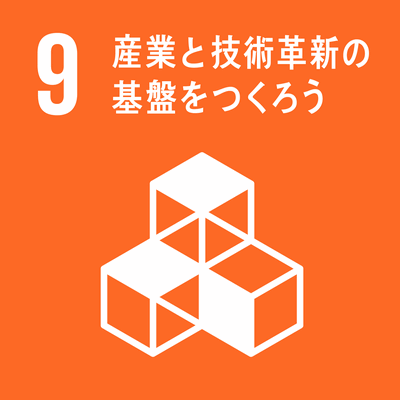シラバス表示
シラバスの詳細な内容を表示します。
→ 閉じる(シラバスの一覧にもどる)
科目の基本情報
| 開講年度 | 2024 年度 | |
|---|---|---|
| 開講区分 | 工学研究科(博士前期課程)分子素材工学専攻/応用化学専攻 | |
| 領域 | 主領域 : E; 副領域 : F | |
| 受講対象学生 |
大学院(修士課程・博士前期課程・専門職学位課程) : 1年次 |
|
| 選択・必修 | 講座必修 |
|
| 授業科目名 | 材料物理化学演習Ⅰ | |
| ざいりょうぶつりかがくえんしゅういち | ||
| Seminar in Materials Physical Chemistry I | ||
| 単位数 | 2 単位 | |
| ナンバリングコード | EN-PHCH-5
|
|
| 開放科目 | 非開放科目 | |
| 開講学期 |
前期 |
|
| 開講時間 |
火曜日 5, 6, 7, 8時限 |
|
| 授業形態 |
対面授業 * 状況により変更される可能性があるので定期的に確認して下さい
「オンライン授業」・・・オンライン会議ツール等を利用して実施する同時双方向型の授業 |
|
| 開講場所 | 決まり次第Moodle、メール等で連絡します。 | |
| 担当教員 | 小塩 明(工学研究科応用化学専攻) | |
| KOSHIO, Akira | ||
| SDGsの目標 |
|
|
| 連絡事項 | * 状況により変更される可能性があるので定期的に確認して下さい |
|
学修の目的と方法
| 授業の概要 | 様々なナノ物質に関する最新の外国語論文を精読し、その内容を徹底的に調査・理解する。その調査結果をまとめ、発表・ディスカッションを行う。この授業では、このような一連の流れを繰り返すことによって、ナノ物質の作製方法や分析・評価方法に関する知識の習得ならびに明快な発表能力、ディスカッション能力を養うことを目的とする。 (Course description/outline) First, you will carefully read the latest foreign language papers on various nanomaterials, and thoroughly investigate and understand the contents. Next, you summarize the survey results and make presentations and discussions. The purpose of this course is to acquire knowledge on nanomaterial fabrication methods, analyses and characterization methods, and cultivate clear presentation and discussion skills by repeating such a series of flows. |
|---|---|
| 学修の目的 | 外国語論文の調査能力、それを要領よくまとめるテクニック、明快な発表能力を身につける。また、ナノ物質の様々な作製方法や分析・評価方法に関する知識を習得する。 (Learning objectives) The goals of this course are: (1) to obtain the ability to research foreign language papers, techniques to summarize them in a simple manner, and to have a clear presentation ability; (2) to obtain knowledge on various nanomaterial fabrication methods and analyses / characterization methods. |
| 学修の到達目標 | 到達目標は次の2つである。 ①論文内容の“徹底的”に調査し、“要領よく”まとめ、“明快に”発表する。 ②様々な材料の作製方法や分析・評価方法に関する“使える”知識を習得し、修士研究さらには将来、材料を取り扱う何らかの場面に遭遇したとき適用する。 (Achievements) There are the following two achievements. (1) Investigate the contents of the dissertation "thoroughly", summarize "essentially" and present "clearly". (2) Obtain “usable” knowledge about various material fabrication methods and analyses / characterization methods, and apply when master's research or even in the future encounters some kind of situations where materials are handled. |
| ディプロマ・ポリシー |
|
| 成績評価方法と基準 | 出席、外国語論文の理解度、発表の明快さ、ディスカッションへの参加の積極性 (Grading policies and criteria) Attendance, understanding of foreign language papers, clarity of presentation, active participation in discussions |
| 授業の方法 | 演習 |
| 授業の特徴 |
問題自己設定型PBL プレゼンテーション/ディベートを取り入れた授業 その他、能動的要素を加えた授業(ミニッツペーパー、シャトルカードなど) 教員と学生のやり取りは日本語でも、英語による論文や教材の講読を含んだ授業 |
| 授業アンケート結果を受けての改善点 | 学生の発表状況を勘案、ならびに授業評価アンケートに基づき改善する。 (Ideas for improving classes) Improve based on student presentations and class evaluation questionnaires. |
| 教科書 | |
| 参考書 | 授業中に紹介する。 (Reference materials) Introduce during this class. |
| オフィスアワー | 随時、総合研究棟Ⅰ205室(事前にメールで確認すること。) (Office hour) Open at any time, Room 205 in the General Research Building I Please make an appointment by e-mail in advance. |
| 受講要件 | 特になし。 (Prerequisites) N/A |
| 予め履修が望ましい科目 | |
| 発展科目 | 材料物理化学演習Ⅱ (Advanced courses) Seminar in Materials Physical Chemistry II |
| その他 |
英語対応授業である。 (This course is English-supported.) |
授業計画
| MoodleのコースURL |
https://moodle.mie-u.ac.jp/moodle35/course/view.php?id=18770 |
|---|
| キーワード | 材料化学、ナノカーボン、ナノ物質(ナノチューブ、ナノファイバー、ナノ粒子、ナノワイヤー) |
|---|---|
| Key Word(s) | Materials Chemistry, Nanocarbons, Nanomaterials (Nanotubes, Nanofibers, Nanoparticles, Nanowires) |
| 学修内容 | Ⅰ. 外国語論文の読解・発表に関する内容 1. 最新のナノ物質に関する文献の検索 J. Phys. Chem.、Nano Lett. などから最新のナノ物質の材料化学に関する文献を入手する。 2. 論文の精読 全文和訳をする。専門用語や知識不足により理解できない基礎的事項に関しては、教科書、専門書等を参考に、人に説明できるまで徹底して理解するよう努める。 3. 参考文献の検索・調査 過去の論文や特許を検索・調査し、当該論文のより深い理解に努める。 4.論文のまとめ 発表のためのレジュメを作成する。単なる和訳ではなく、論文内容の本質と有益な情報を盛り込んだ、明快なまとめ方を習得する。 5.論文の発表 人に納得してもらうための分かりやすい発表の仕方を習得する。発表者以外の者は、疑問点・アイデア等、意見を積極的に発言しディスカッション能力を磨く。 Ⅱ. 知識として習得したい内容 1. ナノ物質作製法 化学気相成長、レーザー技術、プラズマ、化学修飾 2. 分析・評価方法 電子顕微鏡(SEM、TEMなど)、元素分析(EDX、EELSなど)、熱分析(TGA)、表面分析(XPS、STMなど)、分光(Raman、IRなど)、質量分析(TOFMSなど) 3. 真空技術 真空の性質、ポンプ、真空計、真空部品 (Course contents) Ⅰ. Content related to reading and presenting foreign papers 1. Search the latest literature on nanomaterials Obtain the latest literature on material chemistry of nanomaterials from J. Phys. Chem., Nano Lett. 2. Detailed reading of the dissertation Translate the whole sentence into Japanese. For basic matters that cannot be understood due to technical terms or lack of knowledge, try to thoroughly understand textbooks and specialized books until they can be explained to others. 3. Reference search Search and research past papers and patents, and strive for a deeper understanding of these papers. 4. Summary of the paper Prepare a resume for the presentation. To learn not only a Japanese translation but also a clear way to summarize the essence of the paper and useful information. 5. Paper presentation Learn how to make presentations that are easy for people to understand. Anyone other than the presenter actively speaks out opinions, such as questions and ideas, and refines the discussion ability. Ⅱ. Contents to be acquired as knowledge 1. Nanomaterial fabrication method Chemical vapor deposition, laser technique, plasma, chemical modification 2. Analyses and characterization method Electron microscope (SEM, TEM, etc.), elemental analyses (EDX, EELS, etc.), thermal analyses (TGA), surface analyses (XPS, STM, etc.), spectroscopy (Raman, IR, etc.), mass spectrometry (TOFMS, etc.) 3. Vacuum technology Vacuum properties, pumps, vacuum gauges, vacuum components |
| 事前・事後学修の内容 | 事前準備において、文献中の理解できなかった内容は、参考文献や書籍、ホームページ等で調べ、できる限り理解することに努める。それでも理解できなかった内容は、授業中のディスカッションを参考に、事後の再調査によって理解を確実なものとする。 (Contents for pre and post studies) In advance preparations, the contents that could not be understood in the literature will be examined in reference literature, books, websites, etc., and efforts will be made to understand as much as possible. If you still do not understand the content, make sure you understand it by reviewing it, referring to the discussion during the class. |
| 事前学修の時間:120分/回 事後学修の時間:60分/回 |
